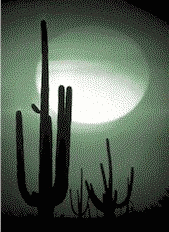Makkawis Recall Haj of Yesteryears
Ibtisam Shegdar, Arab News
MAKKAH, 13 December 2007 — Although Haj used to be tough in bygone days — not only for pilgrims but also for locals who served pilgrims — the old-fashioned Haj was an enjoyable experience, something different to the high-tech Haj of today.
Arab News talked to number of old Makkans, who remember Haj of yesteryears. Muhammad Ba’arma has experienced the Haj for 40 years. “The season actually used to start in Rajab, which is five months before the beginning of the actual Haj. Makkans would go to Madinah in Rajab to visit the Prophet’s Mosque and would come back to Makkah to start preparing for Haj,” he said.
Acording Ba’arma, there used to be different pilgrim guides for different people according to their countries of origin. “There used to be different guides for Indians, Malaysians, Turks, Iranians, Egyptians, and so on. Each group would have a representative of the same nationality, who would arrange everything with the head pilgrim guide,” he added.
Ba’arma said that people in Makkah would prepare their homes to welcome pilgrims. “They would leave one room for themselves and the rest of the house would be prepared to house pilgrims,” said Ba’arma.
Womenfolk would prepare meals and snacks to serve the pilgrims. Mamoul (biscuits filled with dates) and Guraiba (almond biscuits) were especially popular. Pilgrims would often be served rice with potato and ice water, something that was pretty difficult to arrange considering the lack of freezers in those days.
Ba’arma said people, who would not be doing the Haj, would gather in the Grand Mosque and break the fast kept on the day of Arafat together. “In the evening, women and children would walk around the streets of Makkah, chanting songs,” said Ba’arma, adding that the alleyways of Makkah would be decorated with lights.
“Children would set up tables in the streets leading to the Grand Mosque. They would prepare drinks and snacks, and serve them to pilgrims,” he added.
Jawahir Abu Sulaiman said that Haj in the old days was a different experience. “Everyone, young and old, would serve pilgrims. Some people would not participate in Haj and would stay in Makkah. Most of those people would be women and children, who would walk around Makkah and sing songs to pass the few days until their men return,” he said.
Zainab Khashifati said pilgrims would travel to the holy sites on camels. “They would sit on a wooden chair known as a Shugduf, which would be placed on top of camels and which could carry three people,” she said.
“At the sides of the Shugduf, the pilgrims would tie their belongings, including food to eat during the few days of Haj,” she added.
“People, who wouldn’t be going for Haj, would eagerly buy sheep and sacrifice them the same way that the Prophet (peace be upon him) did. As part of their Haj, pilgrims would select their own animals, the meat of which they would distribute to people,” said Khashifati.
Muhammad Hafiz, a pilgrim guide, told Arab News that guides used to travel to the Islamic Port in Jeddah to welcome pilgrims. “Pilgrims would all arrive by Rajab. The pilgrim guide would pick them up and bring them to Makkah,” he said.
“The first thing that pilgrims would do when they arrive in Makkah would be to go to the Grand Mosque and complete their Umrah. Later they would be taken to their place of residence and be served food and drink,” said Hafiz, adding that after having remained in Makkah for a number of days, the pilgrims would travel to Madinah and be looked after by pilgrim guides there, who are known as Dalils.
“People used to travel by camel. Women used to be carried in Sugdufs, while only rich people could afford to ride in a special luxurious camel seat called Tukhturwan, which would be carried by two camels,” he said.
“Prior to Haj, the pilgrims would return to Makkah and prepare themselves for Haj. Each pilgrim guide would have a certain location in Mina. On the first day of Dhul Hijjah, the guides would begin preparing things in Mina,” he said.
Hafiz said that the guides would arrange for pilgrims to be brought to the different Haj sites with the help of camels. “Each guide would hold a particular flag that would make it easy for pilgrims to follow without being lost, and men would go around serving Zamzam,” he added.
After the Haj is completed the pilgrims would be brought back to Makkah and then to Jeddah to return to their home countries. “It’s a difficult job, but the guides would find their job satisfying. They wouldn’t get much money, but it was something they were proud to do,” said Hafiz.
“Although Haj is tough, it remains a great season. Fifty years ago traveling was hard. People used to walk and only a few people could afford camels. The tents used at pilgrim sites would be removable ones. The stay wasn’t as luxurious as it is right now,” said Hafiz.
Labels: Hajj, Muslim practices, Muslims in the past


















